I'm currently working on a lab report for Brownian Motion using this PDF equation with the intent of evaluating D: Brownian PDF equation
And I am trying to curve_fit it to a histogram. However, whenever I plot my curve_fits, it's a line and does not appear correctly on the histogram. Example Histogram with bad curve_fit
And here is my code:
import numpy as np
import matplotlib.pyplot as plt
from scipy import optimize
# Variables
eta = 1e-3
ra = 0.95e-6
T = 296.5
t = 0.5
# Random data
r = np.array(np.random.rayleigh(0.5e-6, 500))
# Histogram
plt.hist(r, bins=10, density=True, label='Counts')
# Curve fit
x,y = np.histogram(r, bins=10, density=True)
x = x[2:]
y = y[2:]
bin_width = y[1] - y[2]
print(bin_width)
bin_centers = (y[1:] + y[:-1])/2
err = x*0 + 0.03
def f(r, a):
return (((1e-6)3*np.pi*r*eta*ra)/(a*T*t))*np.exp(((-3*(1e-6 * r)**2)*eta*ra*np.pi)/(a*T*t))
print(x) # these are flipped for some reason
print(y)
plt.plot(bin_centers, x, label='Fitting this', color='red')
popt, pcov = optimize.curve_fit(f, bin_centers, x, p0 = (1.38e-23), sigma=err, maxfev=1000)
plt.plot(y, f(y, popt), label='PDF', color='orange')
print(popt)
plt.title('Distance vs Counts')
plt.ylabel('Counts')
plt.xlabel('Distance in micrometers')
plt.legend()
Is the issue with my curve_fit? Or is there an underlying issue I'm missing?
EDIT: I broke down D to get the Boltzmann constant as a in the function, which is why there are more numbers in f than the equation above. D and Gamma.
I've tried messing with the initial conditions and plotting the function with 1.38e-23 instead of popt, but that does this (the purple line). This tells me something is wrong with the equation for f, but no issues jump out to me when I look at it. Am I missing something?
EDIT 2: I changed the function to this to simplify it and match the numpy.random.rayleigh() distribution:
def f(r, a):
return ((r)/(a))*np.exp((-1*(r)**2)/(2*a))
But this doesn't resolve the issue that the curve_fit is a line with a positive slope instead of anything remotely what I'm interested in. Now I am more confused as to what the issue is.
